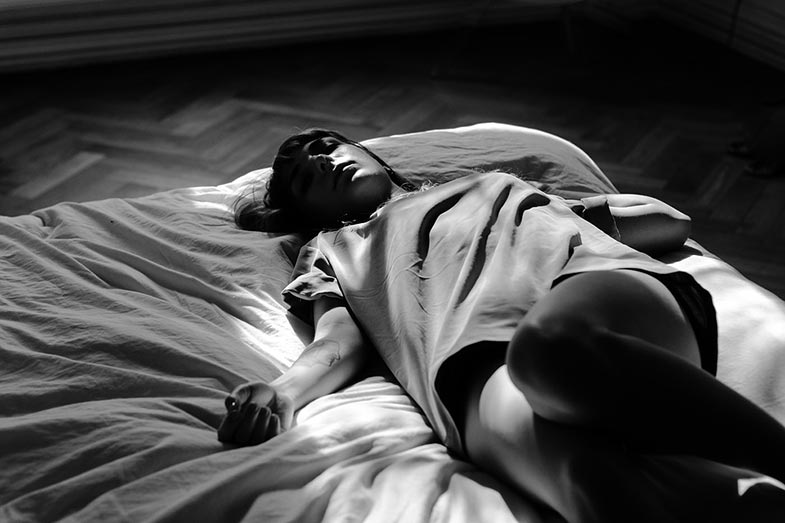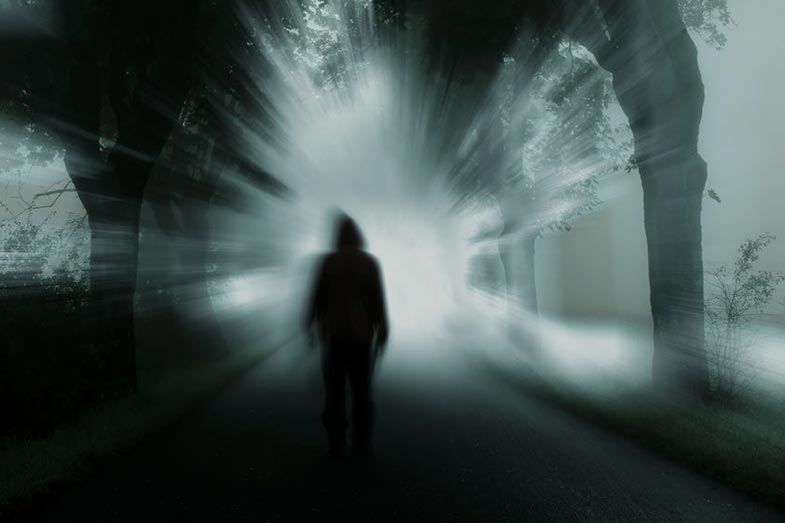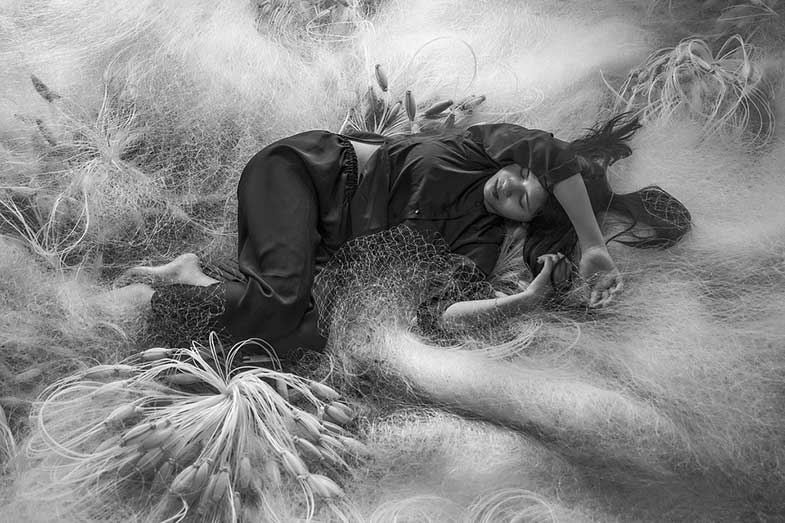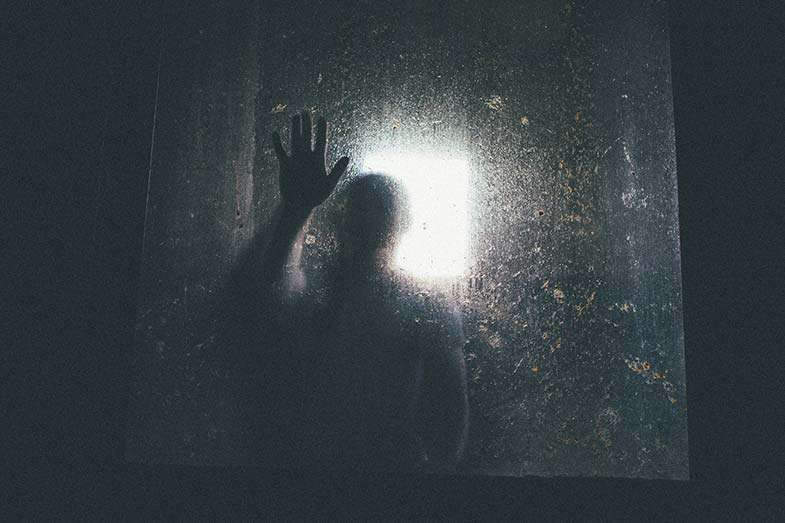Black Figure During Sleep Paralysis (Explained)
Disclosure: We may get commissions for purchases made through links in this post.
People are curious about mysteries and other phenomena that are hard to explain. A whole genre of literature explores different perspectives about supernatural beings, ghosts, and nightmares. However, this becomes very real in the bedroom when people feel paralyzed in their own bodies and see a dark, shadowy figure at the foot of their bed.
What is the black figure during sleep paralysis? The shadowy figure that people see is a hallucination. During sleep paralysis, the brain thinks the person is asleep even if they are awake. The mind proceeds to dream, resulting in a nightmarish experience that feels very real for the person.
It’s easy to feel scared about something we can’t explain. Hence, this article provides an in-depth explanation of this common occurrence.

The Black Figure During Sleep Paralysis
Before we can explain these hallucinations, we need to understand sleep paralysis first.
What Is Sleep Paralysis?
During sleep paralysis, a person is conscious and awake but unable to move their body. Put the two together, and you get the term “sleep paralysis.” A paralysis episode can last a few seconds to a couple of minutes, and it can happen before falling asleep or while waking up.
The scientific explanation behind this lies behind the sleep-wake transition.
Some parts of our brain control our consciousness, and other parts control our bodies. On a typical day, the body and consciousness fall asleep at the same time. Aside from your consciousness, your body also needs to “fall asleep” so that you don’t act out your dreams. Imagine if every time you dream of running, you actually run around the house!
Take a look at sleepwalking: your consciousness is asleep and dreaming, but your body is up and moving. Sleep paralysis is the opposite: the body is sleeping, but the consciousness is awake. In both cases, miscoordination happens in the brain. This is called “desynchronization” or “disassociation.”
Why Do People See Shadow Figures During a Sleep Paralysis Episode?

As mentioned earlier, the black, shadowy figure people see is a hallucination. But where do the hallucinations come in the picture?
In sleep paralysis, Unfortunately, as your body falls asleep, the brain assumes the consciousness is also asleep. It moves into the sleeping phase called the Rapid Eye Movement (REM) sleep, the sleep stage where we dream.
This wouldn’t be a problem if a person experienced harmless dreams while they were awake. The thing is, it can be terrifying being awake but unable to move your body except for your eyes. This causes fear, panic, and anxiety to kick in. When scared, we tend to be more conscious of the environment and the sounds around us.
Think of the times when you felt scared. You became more observant, more alert, more vigilant. Every little sound or movement suddenly felt suspicious and threatening.
Let’s go back to the brain: part of it feels like you are safe, asleep, and snuggled in your soft, luxurious comforter (view on Amazon). The other part is painfully awake. As the two components work together, uncoordinated and out-of-sync, the mind tries to make sense of both. The result is a waking nightmare: a person’s fears at that moment coming to life in front of their very eyes.
Do All People See a Black Figure During Sleep Paralysis Hallucinations?

The shadow isn’t the only common figure people encounter. Sometimes, people say they saw an old hag, demon, or other sinister figures. But some may hear sounds or feel like they were being touched.
As people have experienced throughout history, many beliefs and explanations have popped up. Some believed these were supernatural visions; that the figures they saw were spirits or demons. Some shared that they felt like the creature was attacking them by sitting or choking them.
A psychiatrist theorizes that the hallucination depends on the person’s beliefs. He says that, for example, if the person were a Christian, they may believe that the ‘attacker’ is a demon.
What Do People Experience During Sleep Paralysis?
A questionnaire tool was developed to study sleep paralysis experiences across individuals. It identified 18 types of hallucinations, sorted into three general categories:
- Intruder hallucinations. When a person has this kind of hallucination, they sense, see, or hear another presence.
- Incubus hallucinations. When a person has this kind of hallucination, they feel someone places pressure on them or harm them (ex. feeling like something is sitting on them or choking them).
- Vestibular-motor hallucinations. These hallucinations focus on the person. They feel like they are flying, floating, etc.
Some people ask, “can I die from sleep paralysis?” The answer is no. While people have hallucinations where they felt like they were dying, no research has linked any deaths with the phenomenon.
Also, despite the strong link between the two, sleep paralysis does not always involve having any kind of hallucinations. Some people report experiencing sleep paralysis, but never seeing any shadow persons or feeling another presence. Sleep paralysis is still paralysis even if you don’t see, feel, or hear any scary entities and creatures.
Now that we know more about the black figure, other hallucinations, and sleep paralysis itself, let’s talk about what causes it all.
What Causes Sleep Paralysis?
A study looked at sleep paralysis across cultures to see what can explain sleep paralysis.
What Are Supernatural Explanations for the Shadowy Silhouettes?

Different cultures have different explanations for the causes of sleep paralysis or reasons behind the shadowy persons and demonic entities.
In ancient Greek culture, they believed that these experiences were visits by supernatural beings such as the incubus. Others thought that people with supernatural abilities used their power to cause nightmares on others. Other countries believed that these were spiritual attacks by ghosts or visits by witches.
What Are Scientific or Medical Explanations for Sleep Paralysis?
What makes someone more likely to experience sleep paralysis? Research points to several factors that affect the likelihood for it to happen:
- Genetics (ex. studies on twins show that if one twin experiences sleep paralysis, their twin is very likely to experience them as well)
- Sleeping problems or disorders (ex. sleep deprivation, irregular sleep, narcolepsy)
- Stress, trauma, or related disorders (ex. anxiety disorders, post-traumatic stress disorder)
- Physical factors (ex. brain structures and neurotransmitters)
While there are factors that can increase the chance for someone to experience sleep paralysis or suffering from nightmarish hallucinations, there are some things you can do to avoid them.
How Can I Prevent Sleep Paralysis?
The number one recommendation by doctors and by “sufferers” is this: improve your sleep hygiene and habits.
- Improve your sleep area. For example, having a comfortable, memory foam pillow (view on Amazon) that properly supports your neck and shoulders can help improve your overall sleep.
- Make adjustments in your environment, so your sleep isn’t disturbed. For example, blackout curtains will help sleep deeply through the night. Minding your phone habits before sleep can significantly improve your sleep as well.
- Lie on your side instead of your back. This may be more relaxing for you and reduce snoring.
- Stick to a consistent sleep schedule. 7-9 hours of sleep is ideal, but it’s up to you to figure out what works best.
- Avoid stimulants like caffeine and alcohol, or eating a lot of food and snacks before sleeping because these can disrupt your sleep. However, some drinks can help you fall asleep, such as caffeine-free tea.
How Can I Get Over Sleep Paralysis?
With or without hallucinations, this can be an anxiety-inducing experience. So what can you do when you experience sleep paralysis? Here are tips to help you get out of an episode:
- Keep trying to move one part of your body. Focus on moving your fingers or toes, and later on bigger body parts.
- Take advantage of your eyes. Some say that moving their eyes quickly in different directions helped wake them up.
- Control your breathing. Since fear plays a factor, controlling your breathing can help you calm down and therefore control the episode.
- Psych up yourself. If you sense another presence, remind yourself that it’s not real and that this will pass soon.
- Finally, if you are sharing your spacious, elegant bed (view on Amazon) with someone, let them know about your experience and ask them to wake you up if they notice it happening.
Some people experience sleep paralysis only once, and some never do. For the people who experience this once in a while or even regularly, it may help to see a professional, especially if you think you have other concerns on top of your sleep.
Conclusion – Black Figure During Sleep Paralysis
People throughout history believed that the shadow persons are supernatural or spiritual entities visiting people in their sleep, but science has proven that none of these are real. Due to certain brain processes losing sync with each other, the brain gets confused and starts dreaming as the body remains immobile.
This leads to sleep paralysis, where a person may or may not experience hallucinations as they remain awake in their sleeping body. The most common hallucination is that of shadow people or the black figure, but history records a wide variety of experiences. However, across all these cases, none of the entities seen, heard, and felt, are real.
So rest easy tonight, knowing that you are safe and sound.
